Pakistan Floods: Death Toll in KP Surges as Buner Faces Unprecedented Destruction
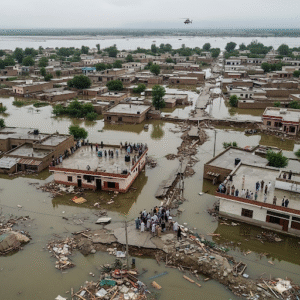
The devastating Pakistan floods have continued to claim lives, with the death toll in Khyber Pakhtunkhwa (KP) reaching 332 on Saturday, according to the Provincial Disaster Management Authority (PDMA). The hardest-hit area is Buner, where hundreds of people have lost their lives, while reports of missing persons continue to emerge.
Rising Casualties Across Northern Pakistan
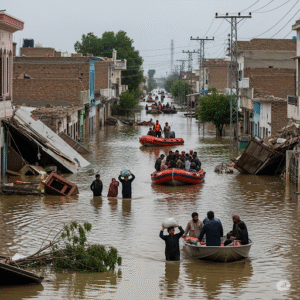
The tragedy extends beyond KP, with Gilgit-Baltistan reporting 12 deaths and Azad Jammu and Kashmir confirming nine fatalities. Torrential rains, cloudbursts, and flash floods have swept away homes, schools, and infrastructure, leaving thousands displaced.
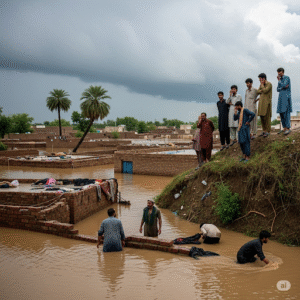
In KP alone, Friday witnessed one of the darkest days in recent history, with over 200 lives lost in a single day, including five crew members of a government helicopter that crashed during relief efforts in Mohmand.
Buner: The Epicenter of the Disaster
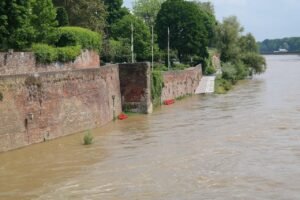
Among all affected districts, Buner has suffered the heaviest toll, with 208 deaths in just 48 hours, according to PDMA reports. The district administration revealed that 120 people are injured, and nearly 50 remain missing. Families continue to search for loved ones amid destroyed homes and blocked roads.
District-Wise Breakdown of Losses
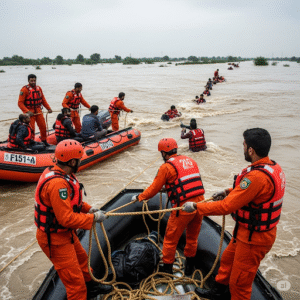
Other badly affected districts include:
-
Shangla: 37 deaths
-
Mansehra: 23 deaths
-
Swat: 22 deaths
-
Bajaur: 21 deaths
-
Battagram: 15 deaths
-
Lower Dir: 5 deaths
-
Abbottabad: 1 child drowned
The PDMA also reported 11 houses completely destroyed and 63 partially damaged. Schools in Swat and Shangla have also been hit, further disrupting children’s education.
Emergency Declared in Flood-Hit Areas

The KP government has declared a state of emergency in the worst-affected districts, including Buner, Swat, Shangla, Bajaur, Mansehra, Battagram, and Dir. This emergency will remain until August 31, with local administrations authorized to mobilize resources for relief operations.
To support rescue and rehabilitation, the KP government has allocated Rs1 billion to PDMA and an additional Rs1.55 billion for the restoration of roads and bridges through the Communication and Works Department.
Communications and Relief Efforts
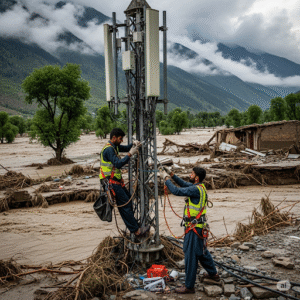
The Pakistan Telecommunication Authority (PTA) confirmed that several cellular and fixed-line services were disrupted due to flood damage. However, PTA teams, in collaboration with telecom operators, are working to restore connectivity, recognizing its crucial role in rescue operations.
Mobile operator Jazz has announced free on-net and PTCL calls for KP subscribers, ensuring families stay connected during the crisis. Meanwhile, the government’s 911 unified emergency helpline (PEHL) has been launched to provide free access to emergency services nationwide.
The Pakistan Red Crescent has also established an Emergency Relief Centre in KP to assist victims. Citizens can reach the center through dedicated phone numbers for immediate support.
Transport and Travel Disruptions
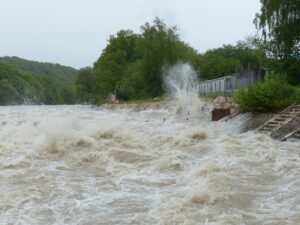
Heavy rainfall and flash floods have also caused massive damage to infrastructure in Gilgit-Baltistan and northern KP. Authorities warned citizens to avoid unnecessary travel due to the risk of landslides and further flooding.
Key bridges in Skardu, Ghanche, and Gilgit have been severely damaged, while major routes such as the Jaglot-Skardu road, Babusar Top, and Naltar Road remain closed. Tourists have been strongly advised to postpone their travel plans.
Humanitarian Crisis for Children
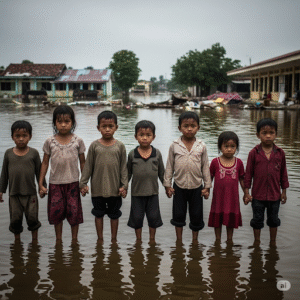
The Pakistan floods have created a humanitarian disaster, especially for children. Across the country, more than 33 million people have been affected, with 1,150 deaths confirmed nationwide, including 380 children.
Thousands of homes and schools have been destroyed, leaving children displaced and traumatized. As the waters recede, outbreaks of waterborne diseases are being reported, adding to the misery of already vulnerable communities.
Organizations working on the ground, such as Right To Play, are providing psychological support for children suffering from trauma while planning ways to help them return to schools as soon as possible.
Conclusion
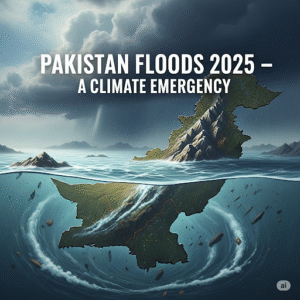

The Pakistan floods of 2025 have unleashed destruction on an unimaginable scale, taking hundreds of lives in KP, displacing millions nationwide, and threatening the future of children and families. With government agencies, NGOs, and telecommunication providers joining hands, relief efforts are underway.
However, the scale of the crisis highlights the urgent need for long-term strategies to strengthen disaster preparedness and protect vulnerable communities from future climate catastrophes.
Hi my loved one I wish to say that this post is amazing nice written and include approximately all vital infos Id like to peer more posts like this
I wanted to take a moment to commend you on the outstanding quality of your blog. Your dedication to excellence is evident in every aspect of your writing. Truly impressive!
thanks